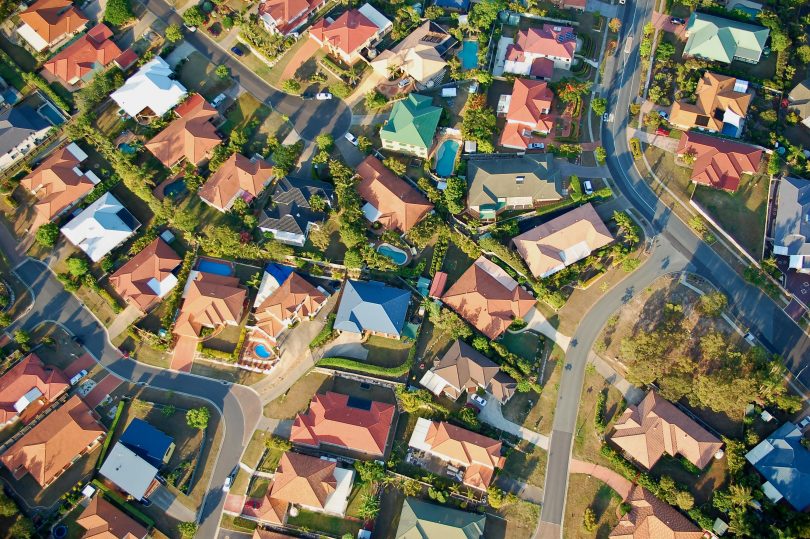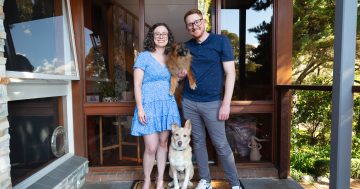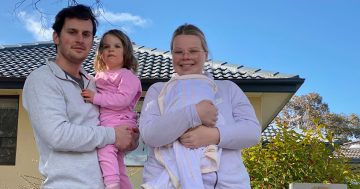
The new First Home Loan Deposit Scheme provides low deposit loans to low and middle income earners. Photo: File.
For many low and middle income earners in Australia, saving for a home loan deposit can be the biggest barrier to entering the housing market.
While repayments on a suitable home loan may be almost on par with rent payments in the ACT, accumulating the money for a 20 per cent deposit can take years if you want to avoid paying mortgage insurance and other low deposit fees.
According to the latest figures from the Real Estate Institute of Australia (REIA), the proportion of income required to meet home loan repayments in the ACT is 19.5 per cent, while the proportion of income required to meet the median rent is 18.3 per cent.
To help more Australians into their first home, the National Housing Finance and Investment Corporation (NHFIC) announced The First Home Loan Deposit Scheme last November.
Under the scheme, the NHFIC will guarantee low deposit loans to low and middle income earners who have never owned a property before, with a maximum allocation of 10,000 places in the scheme per year. This means genuine first home buyers have the opportunity to secure their first home with as little as 5 per cent deposit, without paying mortgage insurance or extra fees.
The new scheme will complement the existing First Home Super Saver Scheme, which allows people saving for their first home to make extra super contributions at low tax rates and withdraw the money later for their home deposit.
Banks and other lenders must formally participate in the new First Home Loan Deposit Scheme if they want to offer it to customers. They must also agree not to charge eligible customers higher interest rates than they would offer to equivalent customers who aren’t part of the scheme.
So far 27 lenders have come on board, with National Australia Bank (NAB) and Commonwealth Bank (CBA) kicking off on January 1 and already filling their allocation of 3000 First Home Loan Deposit Scheme places.
Other major banks that have been accepted, such as Bendigo Bank, started taking applications from February 1. But the remaining 7000 places in the scheme for 2020 are expected to be taken up fairly rapidly.
To be eligible for The First Home Loan Deposit Scheme you must:
- Be a genuine first home buyer
- Have a taxable income of $125,000 or less in the previous financial year
- Be an Australian citizen
- Be at least 18 years old
- Have saved between 5 and 19 per cent deposit
- Live in the property for a certain period.
Other eligibility requirements apply to couples and the types of properties the scheme covers. For example, you can only purchase a residential property with a value less than the price cap. Properties in the ACT have a price cap of $500,000.
People who are interested in applying for the scheme should talk to their bank or lender to find out if they offer it. They can determine if you are eligible and apply to the NFIC for you.
Bendigo Bank has set up a specialist team to handle enquiries for their customers and can accept applications for the scheme from February 1.
Customers can call 1300 024 701 to register their interest for the scheme. Or pop into their local branch at:
Curtin: 1/20 Curtin Place, Curtin. Ph: 6260 5140
Jerrabomberra: 2a/2 Limestone Dr, Jerrabomberra. Ph: 6299 8357
Wanniassa: Wanniassa Shopping Centre, Sangster Place. Ph: 6231 9024
Calwell: Calwell Shopping Centre, Webber Crescent. Ph: 6291 3385
Canberra: 161 London Circuit, Canberra City. Ph: 6290 9700
Jamison: Jamison Plaza, Bowman Street. Ph: 6253 0088
This is a sponsored article, though all opinions are the author’s own. For more information on paid content, see our sponsored content policy.
















